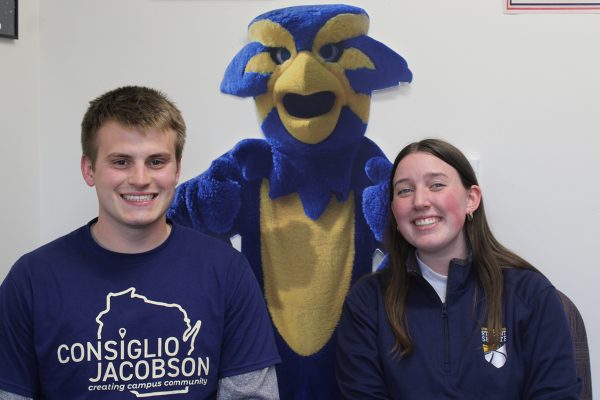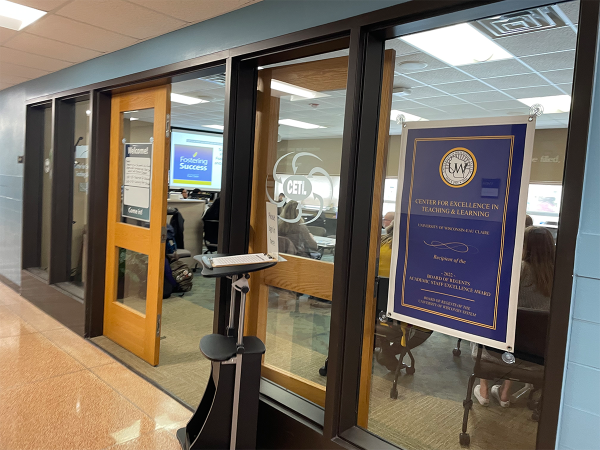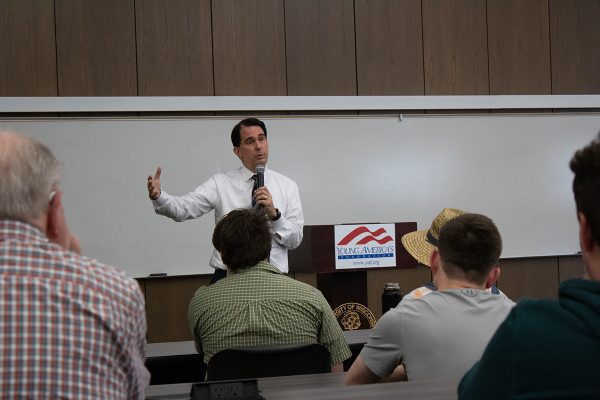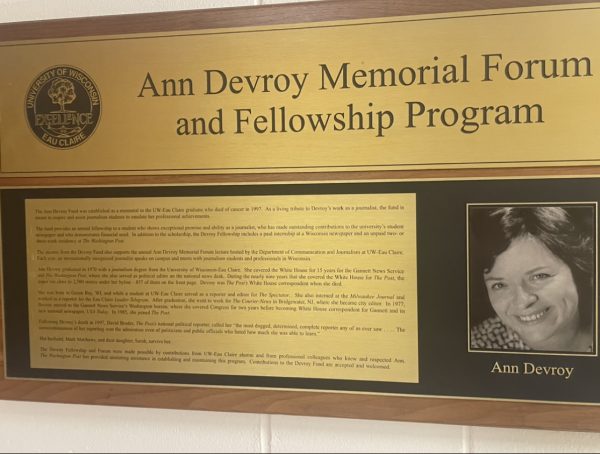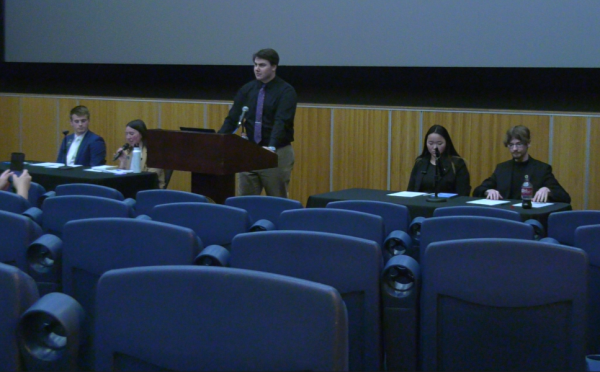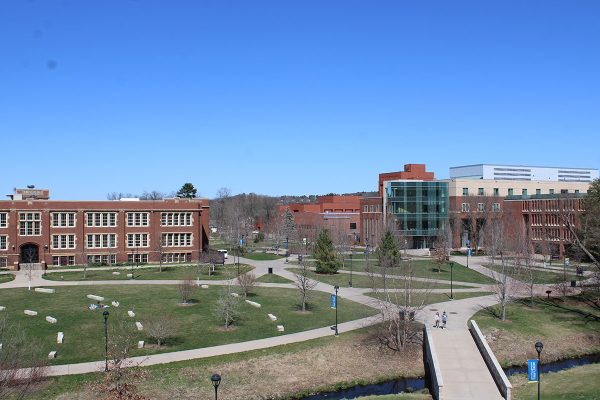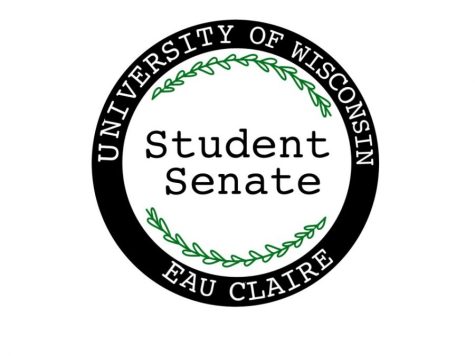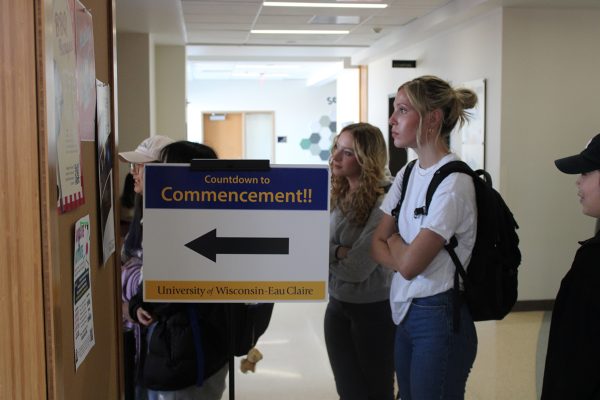More students defaulting on student loans
The rate of students who default on student loans at UW-Eau Claire has increased, though not by much, experts from the Eau Claire Financial Aid office said.
The three-year cohort default rate on student loans rose from 13.4 percent in 2009 to 14.7 percent in 2010. The U.S. Department of Education released the numbers in September.
A person will default on a student loan if they have not made a payment on their federal student loans for 270 days and have not contacted their lender to defer or forebear their loan payments.
For public institutions like Eau Claire, the national default rate is about 13 percent, said Kathy Sahlhoff, director of financial aid at Eau Claire.
Eau Claire’s three-year cohort default rate is 3.2 percent, lower than the national average.
“That went up a tick for us,” Sahlhoff said. “We’re not at all panicked, but we’re not pleased with it.”
She said part of the reason student loan default rates are lower is because many Eau Claire students find jobs quickly after graduating.
“Our students are successful students,” Sahlhoff said. “They graduate and find jobs. We have a high retention rate and a high graduation rate, and those students are repaying those loans.”
Melissa Semingson is the expert on loan repayment plans in the Financial Aid Office. She said defaulting doesn’t happen right away. Students have a nine-month period of being delinquent in payments before they default.
“When you finally reach the point of default, you really hit the brick wall,” Semingson said.
Once you default on student loans, you can’t apply for more loans, Semingson said. Providers can take your tax returns and garnish your wages in order to collect what you owe.
To avoid reaching this point, Semingson also said the best thing you can do is talk to your loan provider.
“If you don’t have a job, you certainly can qualify for deferment or forbearance,” Semingson said. “If you have a job, but aren’t making enough money to have the funds available to make those monthly payments, there are certainly other options. There are income-based repayment (plans).
But in order to find those other options, both Sahlhoff and Semingson stressed that it is important for students to not avoid the letters their provider sends them if they stop making payment.
Stephanie Zahara is a student at Eau Claire who has about $20,000 in student loans to pay back. She hasn’t had to start repaying her loans as she is still in school, but her husband, who was going to school online, has taken time off and his student loans are due.
“Being that I was going to school full-time, he decided to not go to school for now,” Zahara said. “So right now he has some student loans out that we’re unable to pay because he’s the only person working in the household and we have two kids. So, you know, all of our money goes to bills and remodelling our house.”
Sahlhoff said there is one factor most of the Eau Claire students who default on their loans have in common. It’s not choice in major or whether they are a low-income student, she said.
“”It’s that they didn’t successfully graduate,” she said.
When students take time off from college, be it temporary or permanent, after six months, students need to begin making payments on their loans or set up deferment plans with their providers.
She said the absolute most important thing to do to avoid falling into default is for students to keep in contact with their loan providers and discuss any problems they may have with making payments.
Zahara and her husband tried that, but they now have a past due balance of $900 they still have been unable to pay.
“We did defer them for a little while, but they only let us defer them for a little bit,” she said. “And I didn’t understand why because I know people who have referred them for quite a while, but they only let us defer them for a few months. So now we’re back to paying them, but we haven’t been paying them because we don’t have the money.”
The last thing the university is required to do to help students with their loans, Sahlhoff said, is to give them an exit interview about their loans. But some students still face troubles and it is difficult for the financial aid office to seek out people who are having trouble paying their loans, she said.
“Every individual former student who gets to the point of actually being in default, that is a devastating place for someone to be,” Sahlhoff said. “(It) hurts them, that’s so serious about changing what they can do and the choices they can make in life. That’s the last thing we ever want to see any of our students do.”
But in order to find those other options, both Sahlhoff and Semingson stressed it’s important for students not to avoid the letters their provider sends them if they stop making payments.
Stephanie Zahara is a student at Eau Claire who has about $20,000 in student loans to pay back. She hasn’t had to start repaying her loans as she is still in school, but her husband, who was going to school online, has taken time off and his student loans are due.
“Being that I was going to school full-time, he decided to not go to school for now,” Zahara said. “So right now he has some student loans out that we’re unable to pay because he’s the only person working in the household and we have two kids. So, you know, all of our money goes to bills and remodeling our house.”
Sahlhoff said there is one factor most of the Eau Claire students who default on their loans have in common. It’s not choice in major or whether they are a low-income student, she said.
“It’s that they didn’t successfully graduate,” Sahlhoff said.
When students take time off from college, be it temporary or permanent, after six months, students need to begin making payments on their loans or set up deferment plans with their providers.
Sahlhoff said the absolute most important thing to do to avoid falling into default is for students to keep in contact with their loan providers and discuss any problems they may have with making payments.
Zahara and her husband tried that, but they now have a past due balance of $900 they still have been unable to pay.
“We did defer them for a little while, but they only let us defer them for a little bit,” Zahara said. “And I didn’t understand why because I know people who have referred them for quite a while, but they only let us defer them for a few months. So now we’re back to paying them, but we haven’t been paying them because we don’t have the money.”
The last thing the university is required to do to help students with their loans, Sahlhoff said, is to give them an exit interview about their loans. But some students still face troubles and it is difficult for the financial aid office to seek out people who are having trouble paying their loans, she said.
“Every individual former student who gets to the point of actually being in default, that is a devastating place for someone to be,” Sahlhoff said. “(It) hurts them, that’s so serious about changing what they can do and the choices they can make in life. That’s the last thing we ever want to see any of our students do.”

